This past summer Deb & I visited Newfoundland for the first time. It was a magical place to explore and happily we were able to see and photograph the wonderful geography, historic lighthouses and quaint villages as well as three unpredictable things we had hoped to see, namely icebergs, Puffins and whales.
This year was one of the best in recent memory to see icebergs in Newfoundland due to the large numbers present and how late into the summer the pack ice remained before breaking up and freeing the mighty icebergs to drift out to sea. This allowed Deb & I to see a few icebergs at the end of July, more than a month later than usual. We had planned the timing of our visit to see Puffins and whales which made the likelihood of seeing icebergs slim, however as we daily monitored IcebergFinder in the weeks prior to our trip we were excited to find that we just might see some. (Bookmark the IcebergFinder link if you ever plan to visit Newfoundland and want to know where the icebergs are).
While staying in Twillingate, part of the region known as Iceberg Alley along the North Coast of the island, we heard a large iceberg was just a few kilometres away in Crow Head. Neither Deb nor I had ever seen an iceberg and will never forget the feeling of cresting a hill heading into the village and seeing a huge iceberg sitting majestically just off shore. I had to stop the car and take a pic 🙂
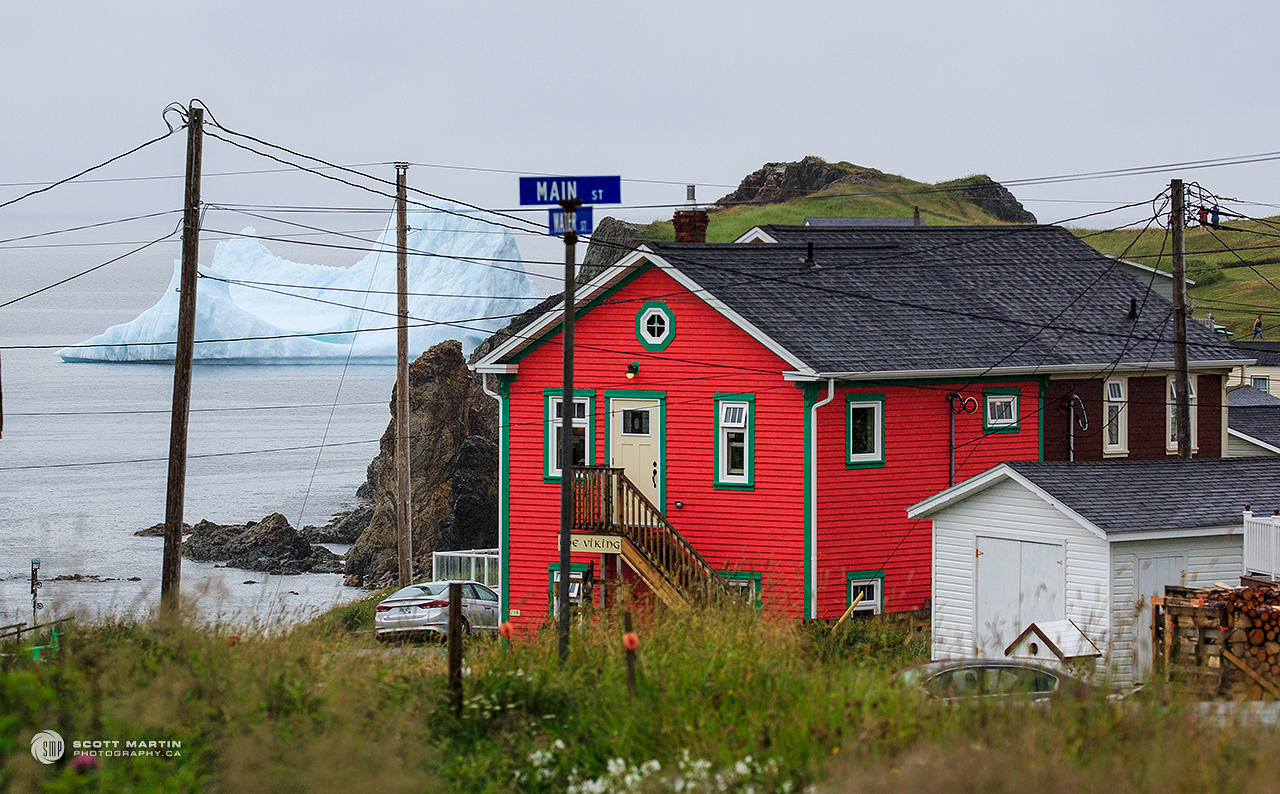
We quickly made our way to a great vantage point to see and photography the iceberg.
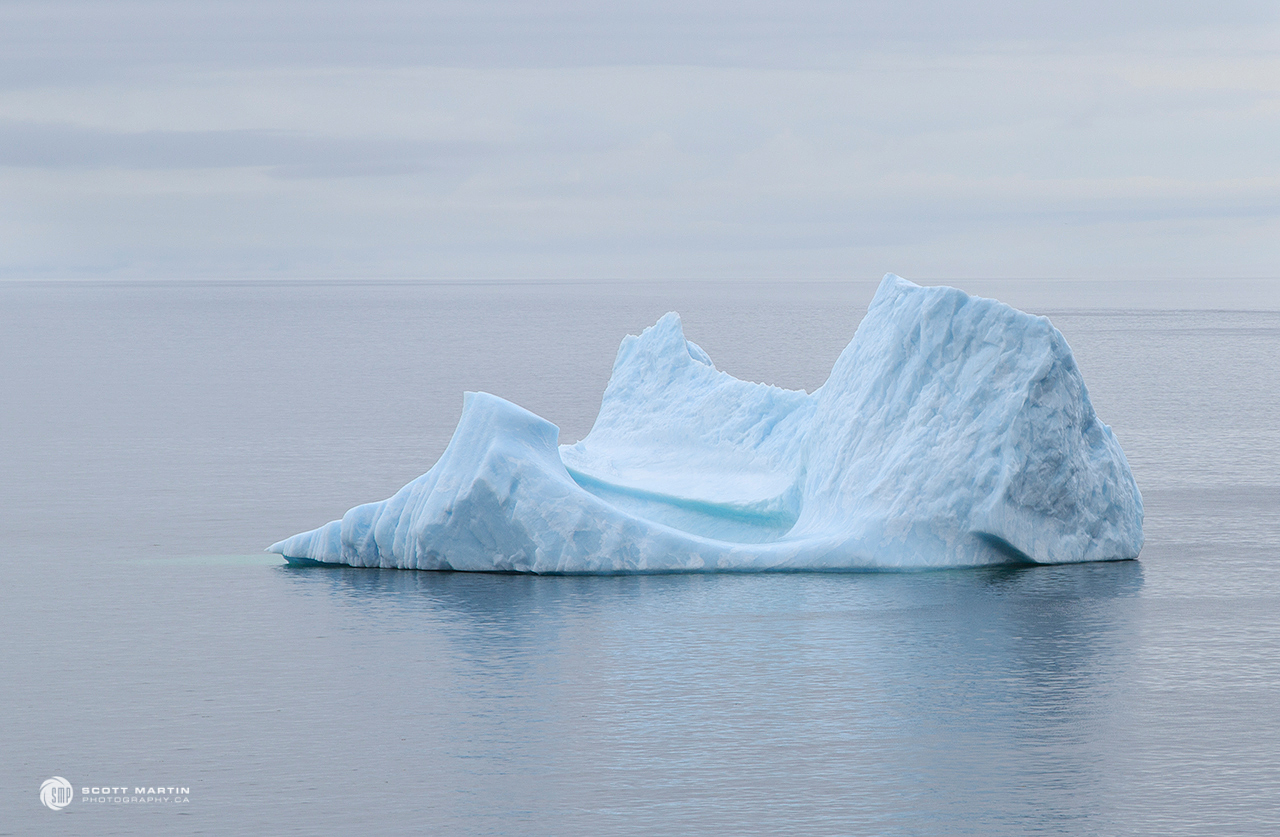
Icebergs are formed when they calve off a glacier and typically survive for three to six years before passing out of existence. Most icebergs in Newfoundland are formed when they break off glaciers in Greenland and currents take them southwest where they encounter the Labrador Current which they follow until they physically break apart due to the erosive action of the wind and waves or simply melt as they stray into warmer waters.
We were thrilled to see a Minke whale slowly swim behind the iceberg and give a bit of context to the size of the iceberg. Minke Whales are up to 30′ long and the locals were saying the iceberg was 200′ wide and 75′ high. It was grounded in 580′ of water! Take note of the iceberg water level in this picture and compare it with the images to follow.
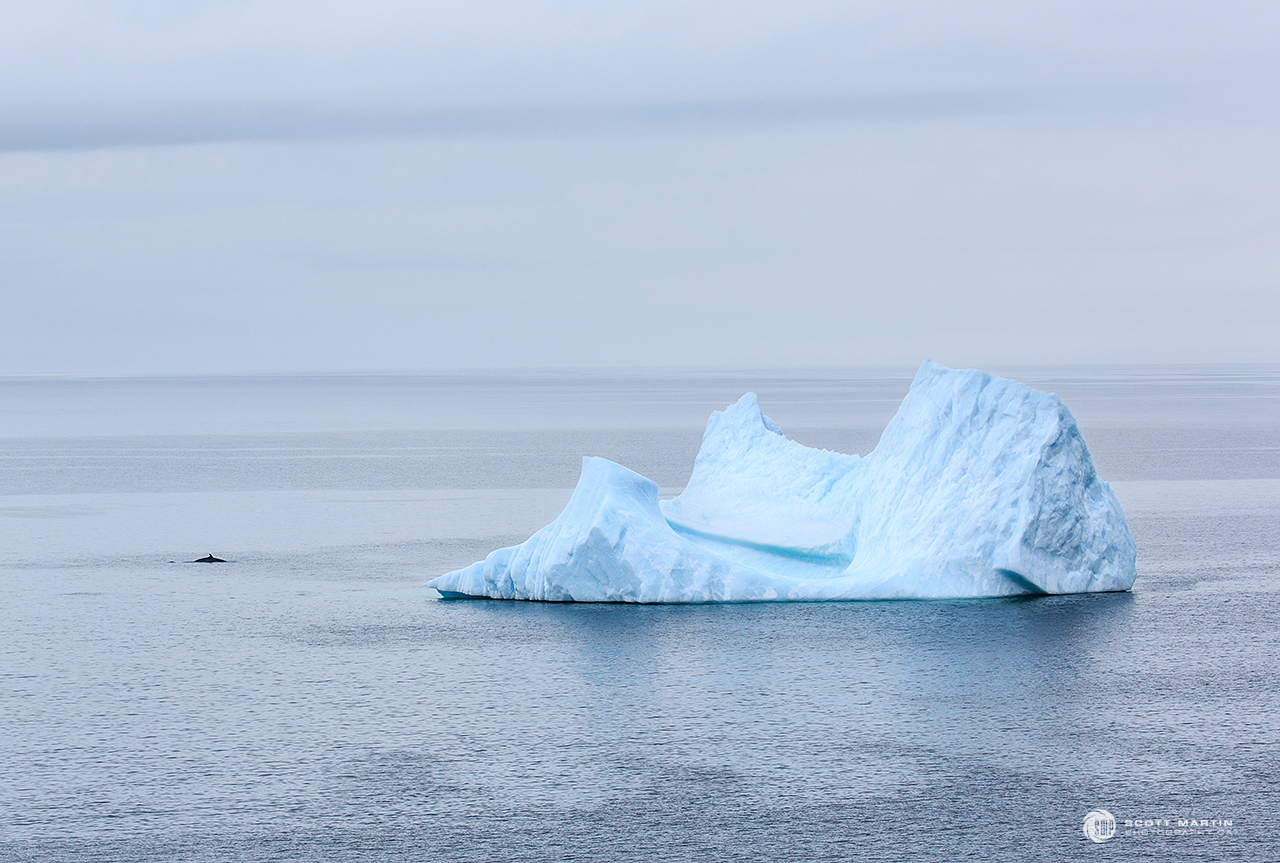
These two kayakers, much braver than Deb or I, also provide some context, but have you noticed the changing water levels….the iceberg was destabilizing and starting to roll!
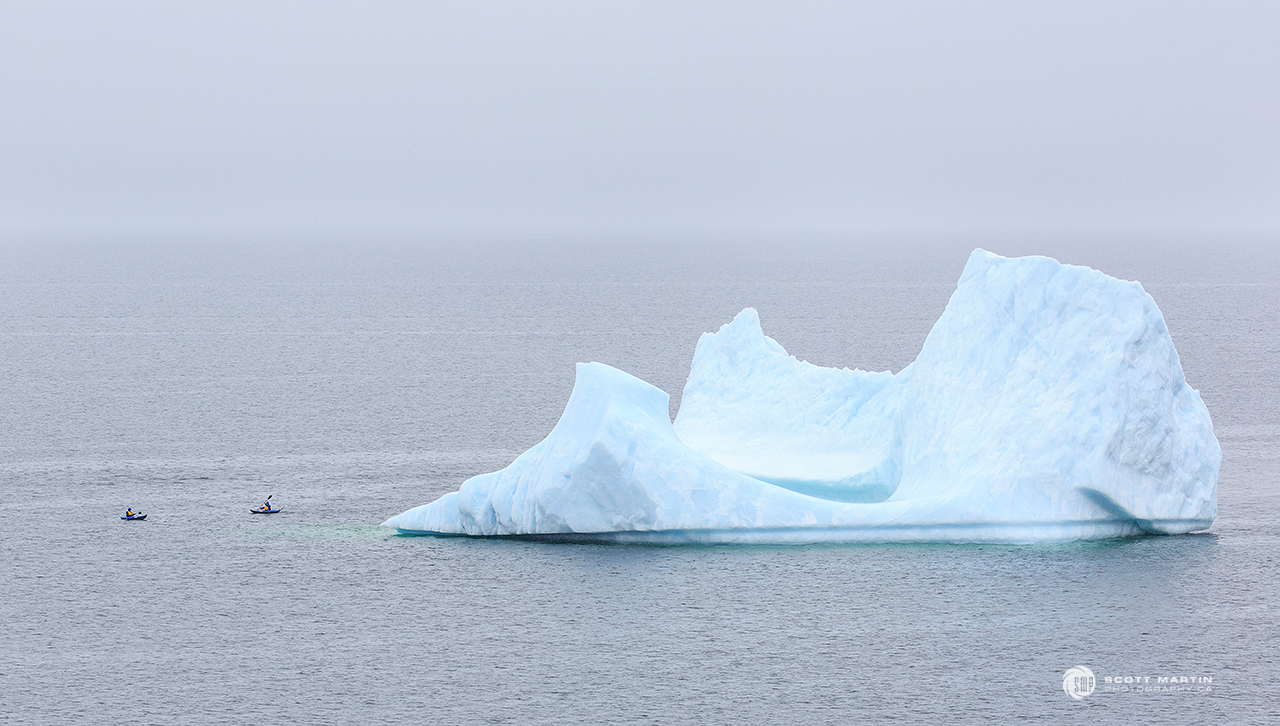
As the iceberg moves, the weight distribution is altered which can cause the iceberg to fragment as seen in this next image. The sound of ice breaking away from the iceberg and splashing into the water is like nothing we had ever heard; like the combination of a rifle shot with thunder.
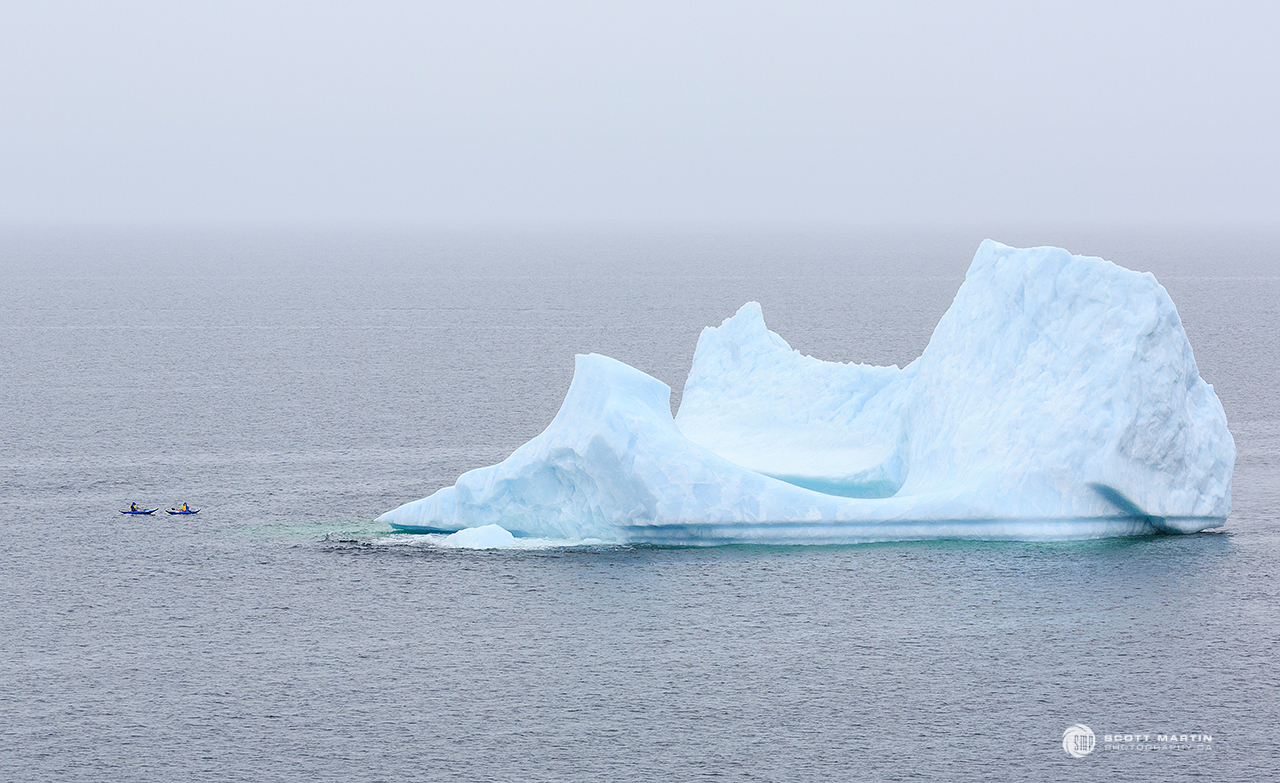
Once the iceberg began to fragment, the process continued and less than five minutes after the first piece of ice fractured and even larger segment fell off the back of the iceberg. Check the water level marks and note how much the ice mass was moving.
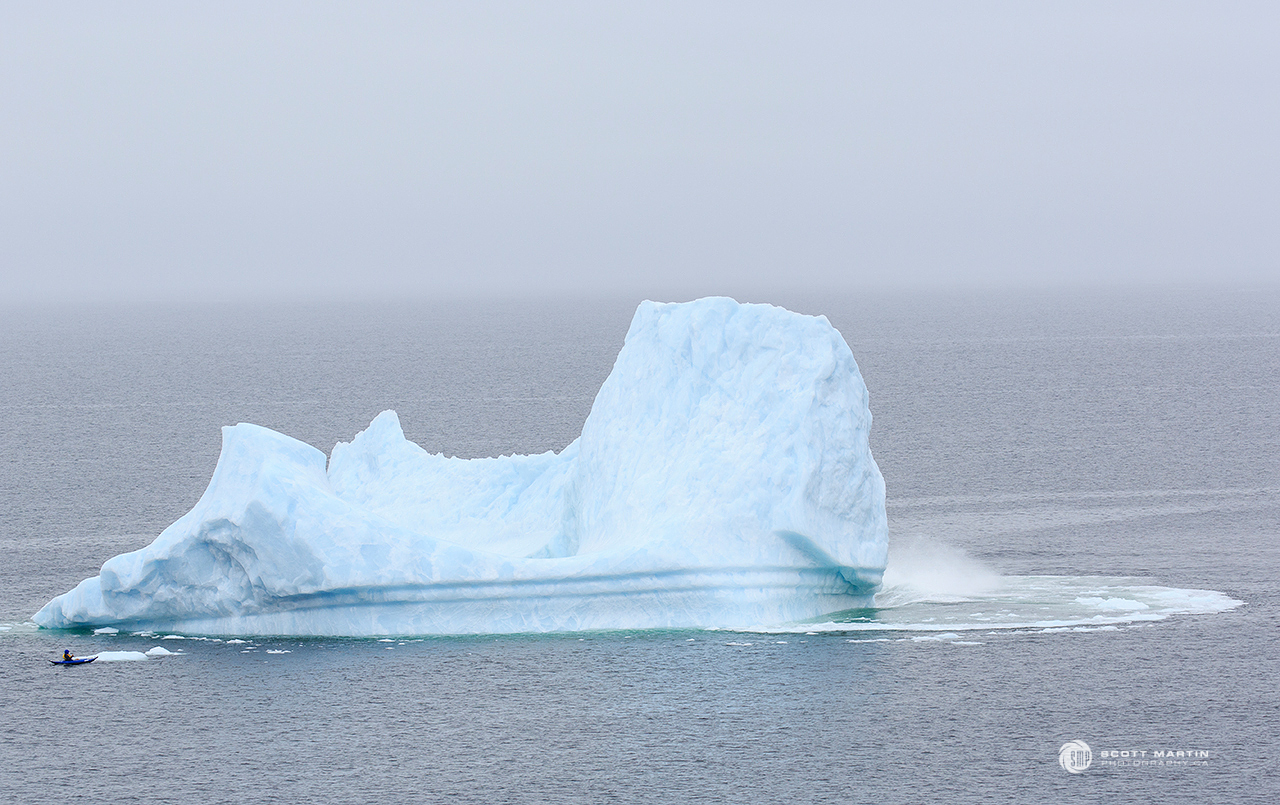
I can only imagine what it would have been like to be in a kayak while an iceberg was breaking up around me!
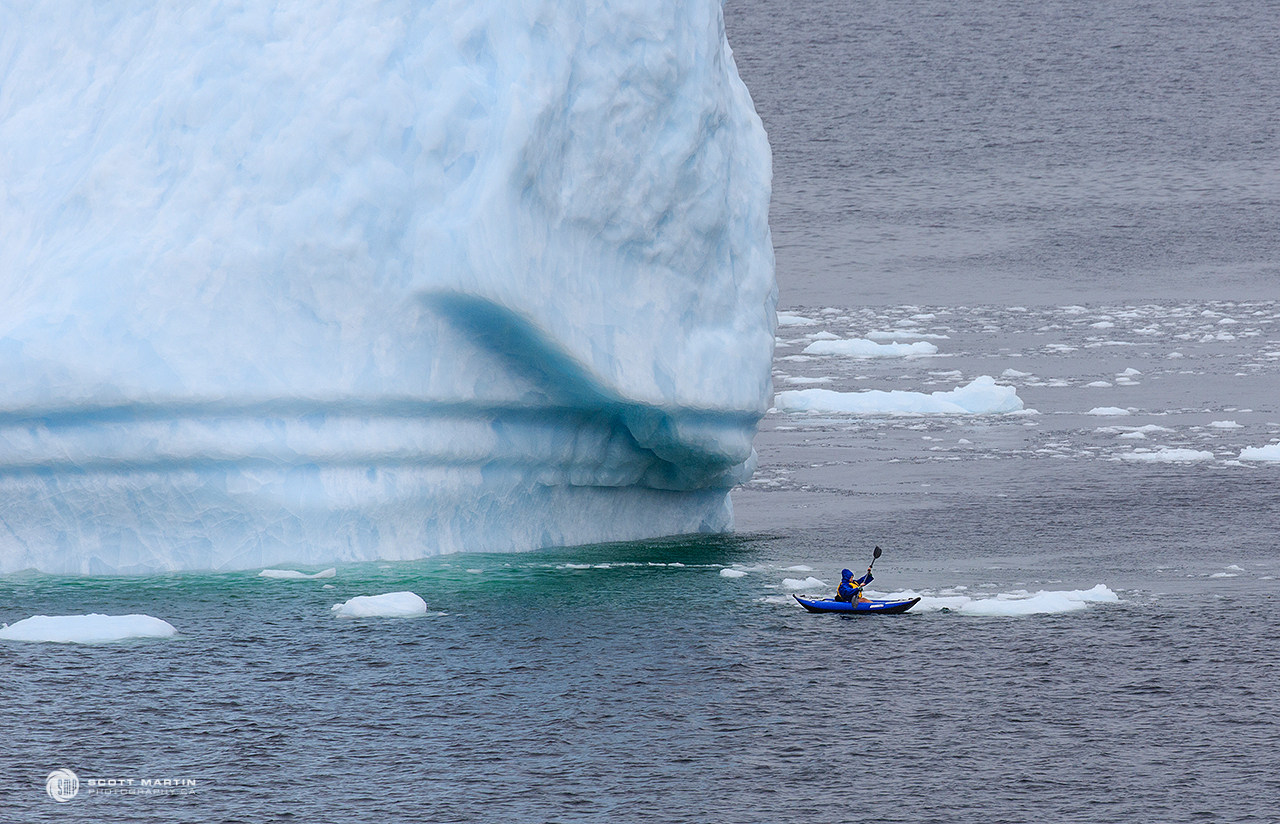
Although we didn’t try a kayak, we connected with Iceberg Man Tours in Twillingate for a two hour cruise highlighted with a visit to the iceberg. Captain Cecil was terrific and we learned so much about Newfoundland, the culture, the whales and the icebergs during our cruise. Captain Cecil is a retired teacher, who grew up in Twillingate, served as mayor of Twillingate and started Iceberg Man Boat tours in 1985. Cecil knows Newfoundland!
The little village of Crow Head, NL as seen from amongst ice fragments around the iceberg.
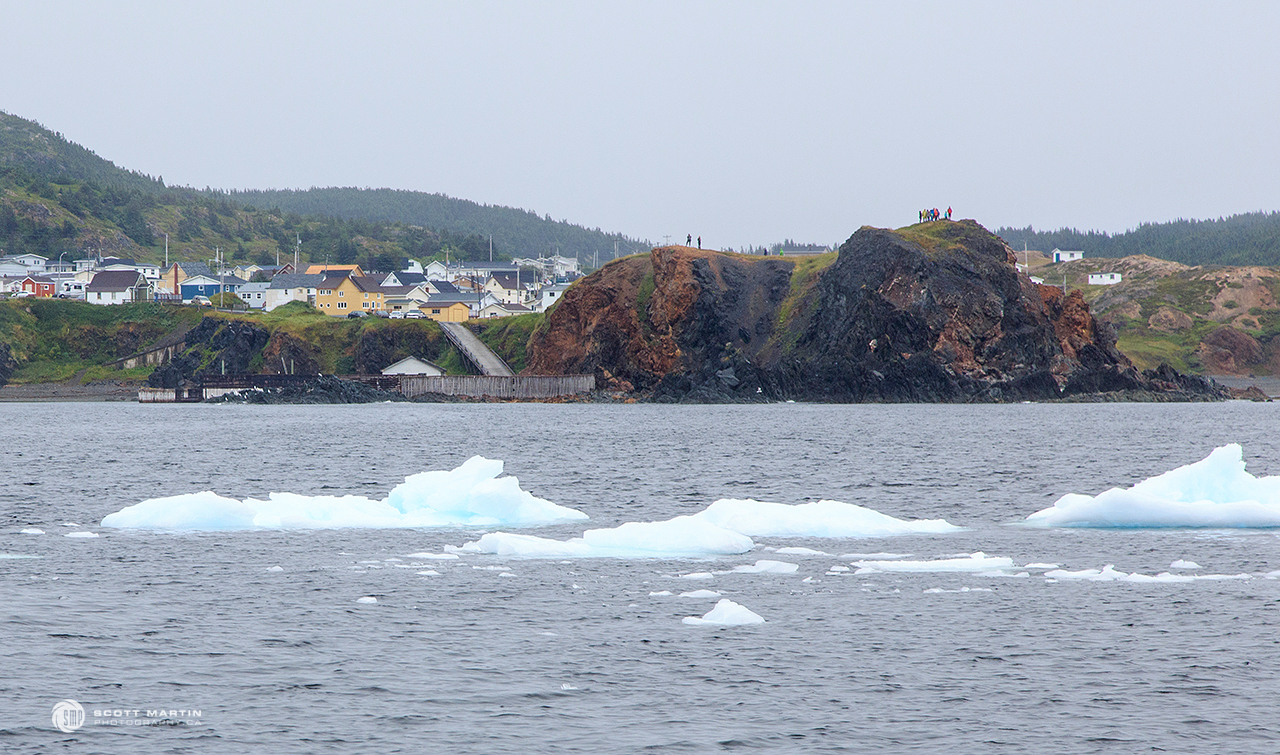
We circled around the iceberg a number of times, taking more than 500 images of it from every conceivable angle. It was hard to put the camera down!
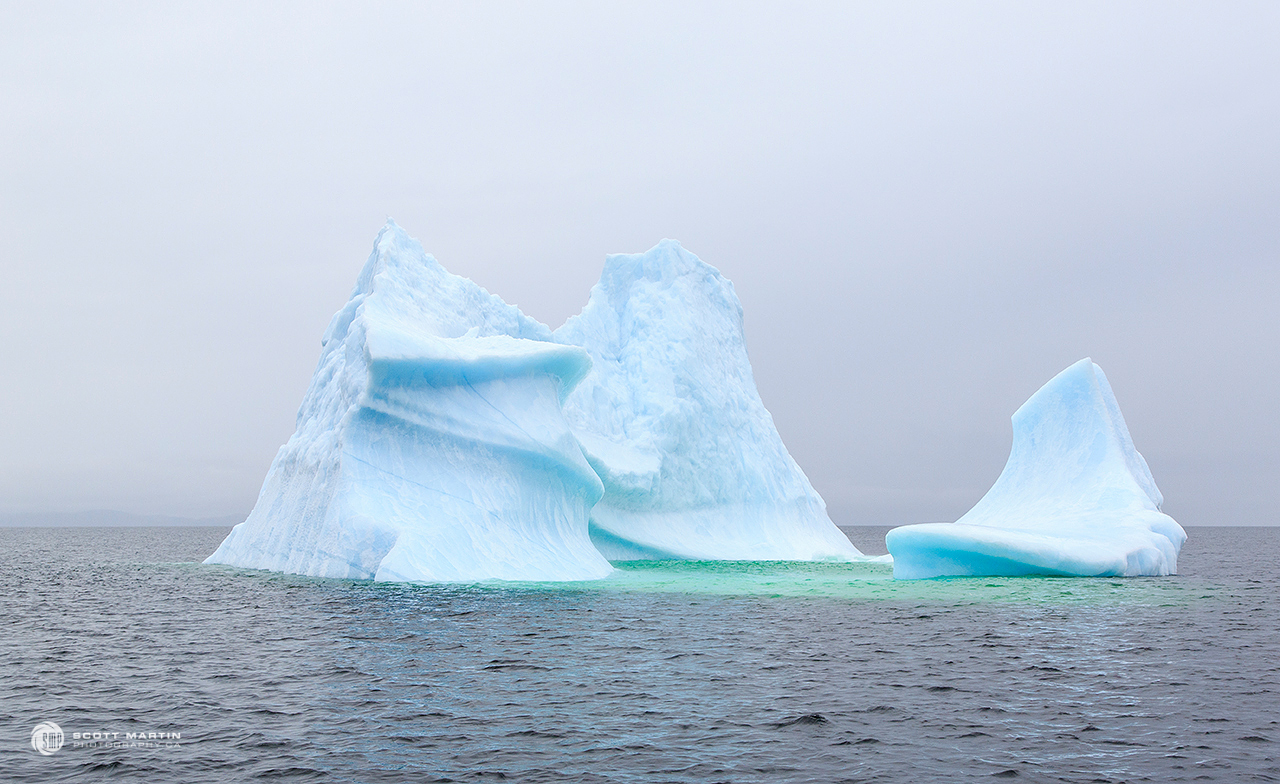
.
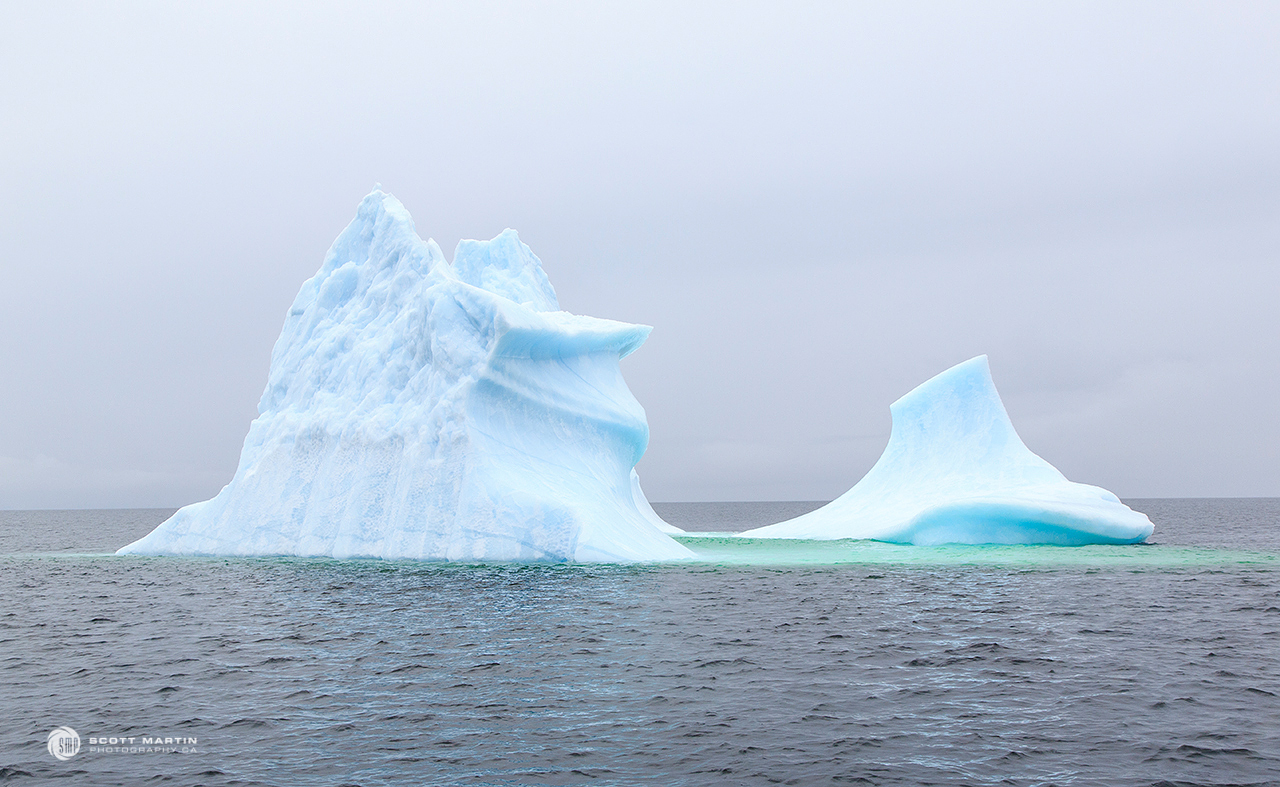
Like modern pieces of art.
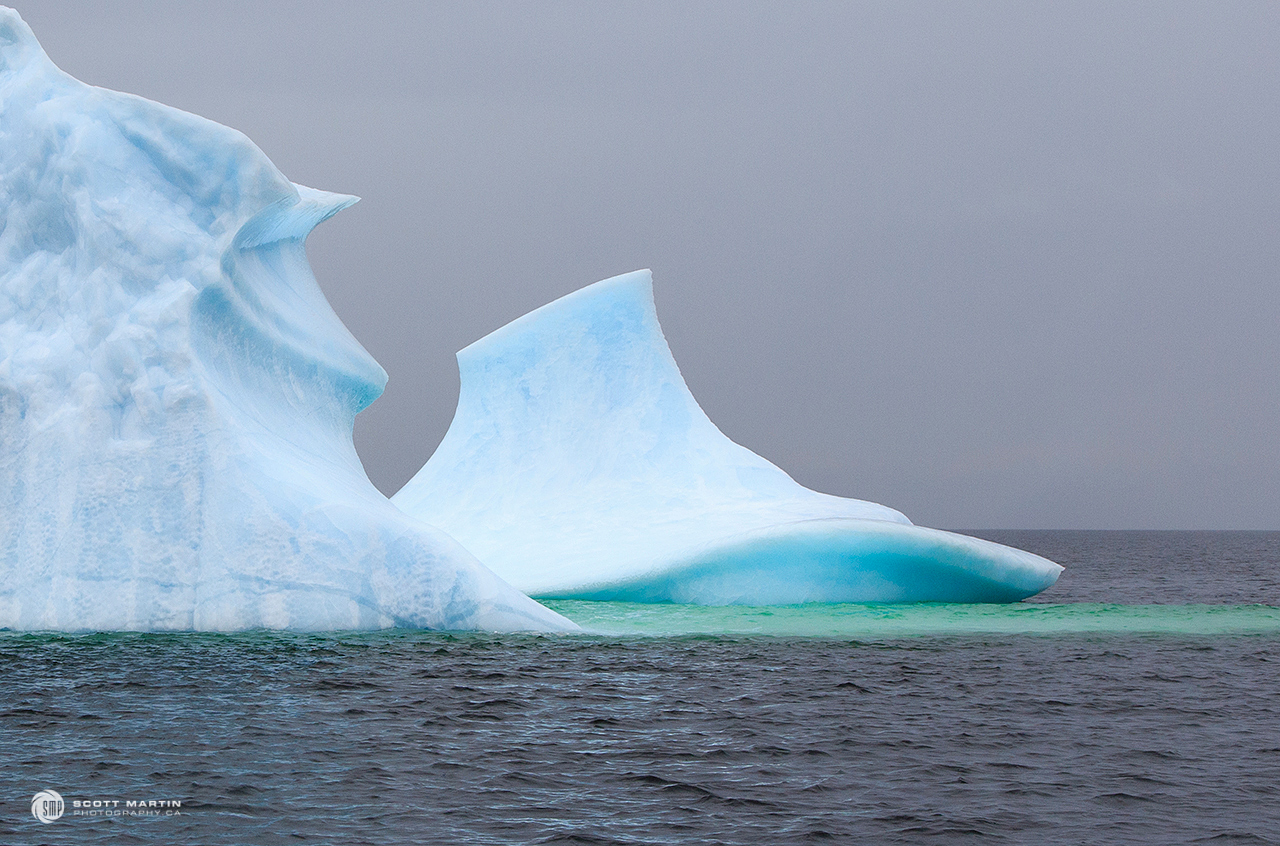
The approaching ship provides an interesting size perspective for the next image.
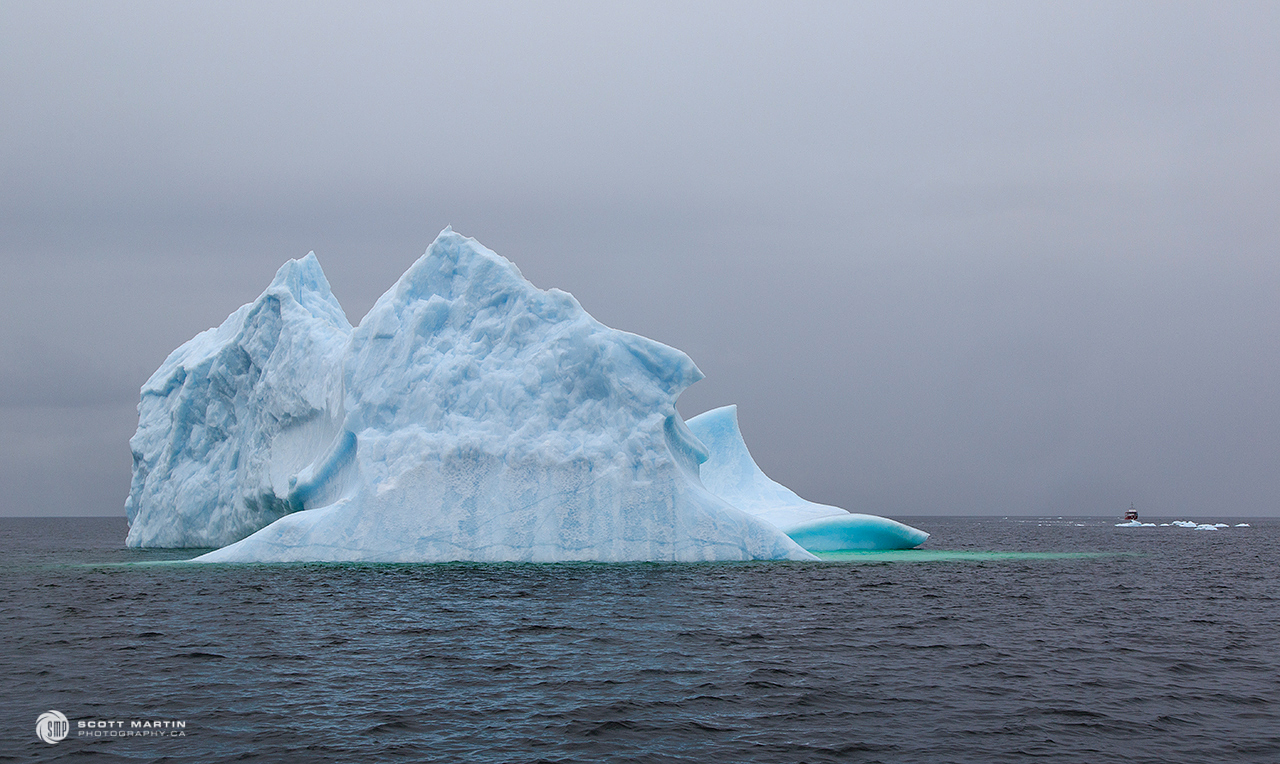
.
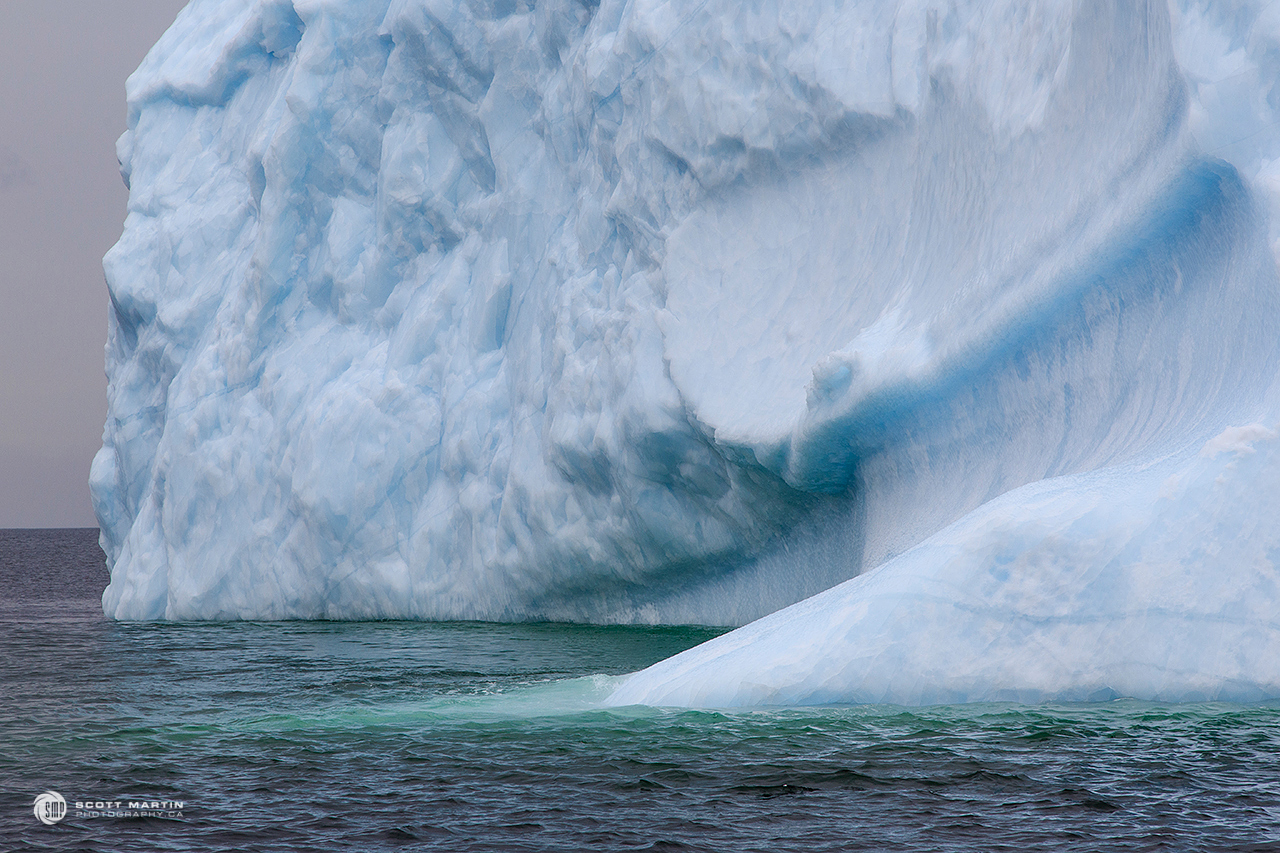
After returning to Captain Cecil’s dock in Twillingate and enjoying dinner in a little restaurant on the edge of the harbour we headed back to Crow Head to watch the sunset and see the iceberg one last time. Although we couldn’t frame the sun setting over the iceberg from the mainland, we did enjoy the colours and the new look they gave the iceberg. It was remarkable how much the iceberg had changed in ten hours.
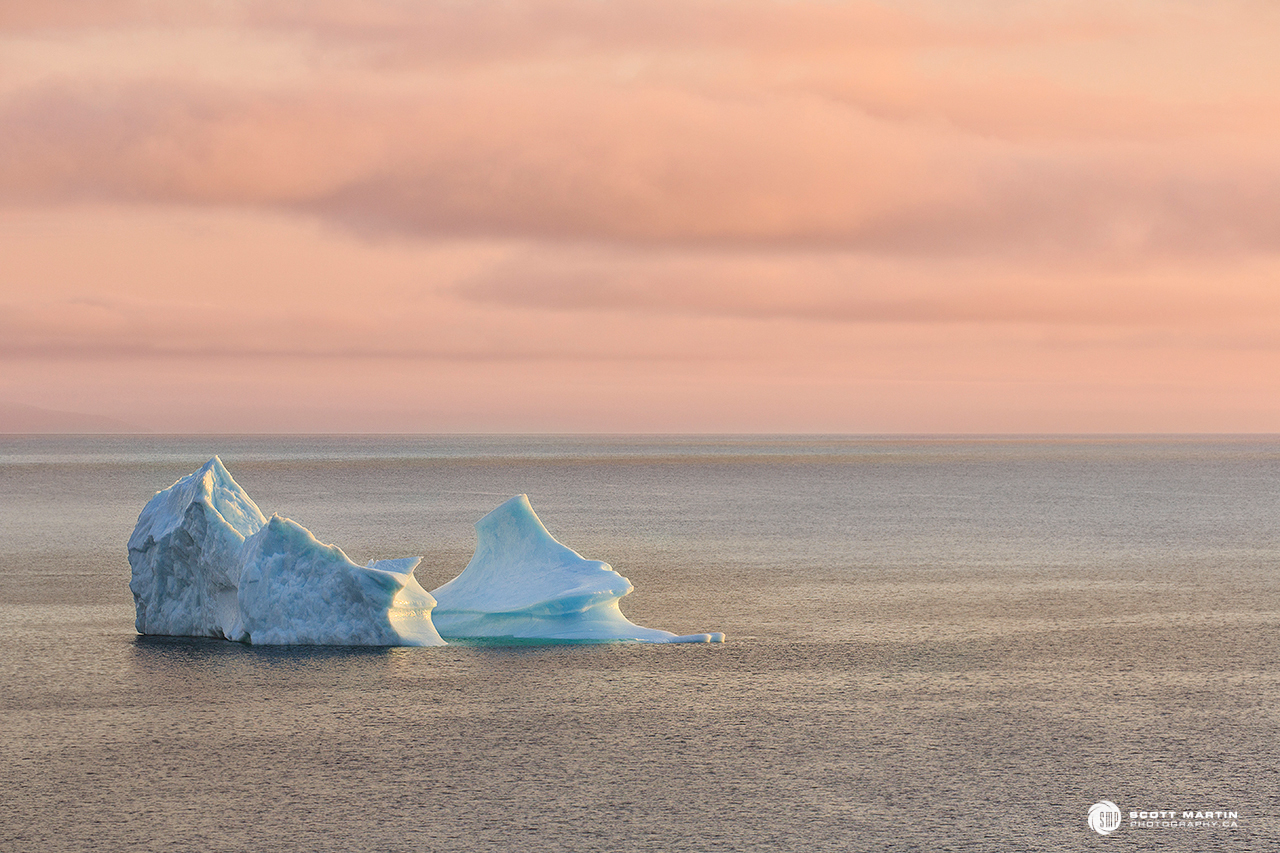
As the sun went down we were chatting with another couple and their daughter and it turned out the father & daughter were the two kayakers from earlier in the day! Ironically, as they were saying they felt more awe than fear as the large chuck of ice fell from the iceberg close to their kayaks, a loud rife sounding noise came from the iceberg and the entire iceberg began to pitch and roll quite drastically. By this time it was about thirty minutes after sunset and it was quite dark, however I just had to take some images, even though an ISO of 8000 was required.
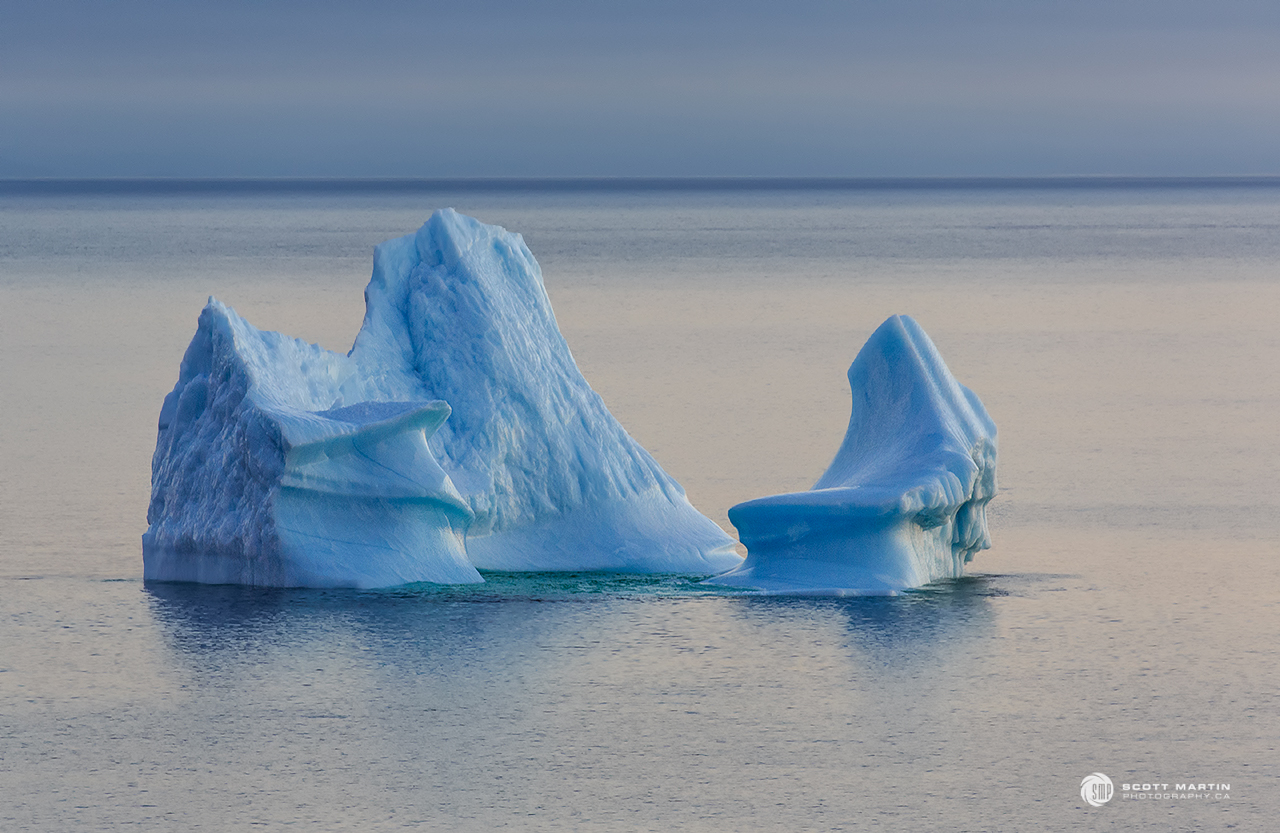
The iceberg slowly begins rotating in a clockwise direction.
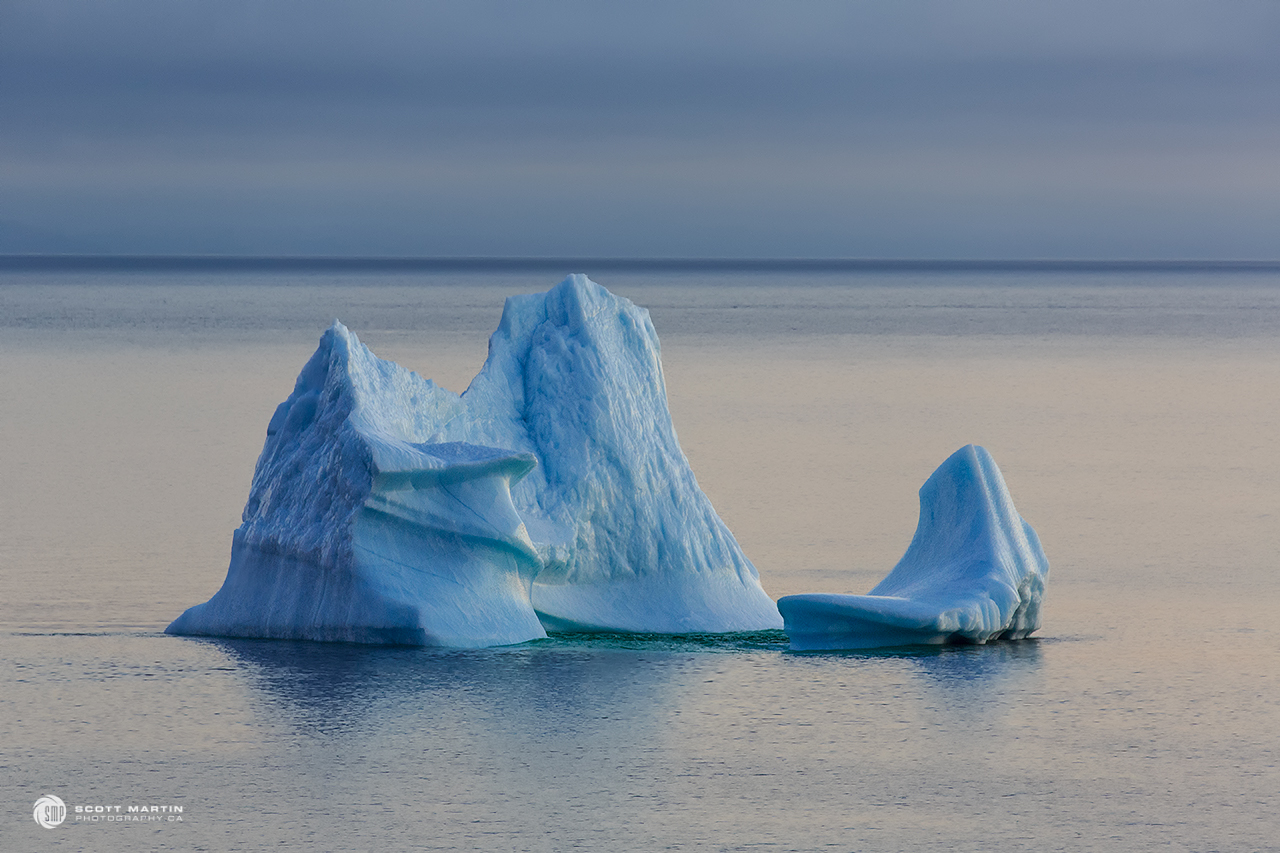
.
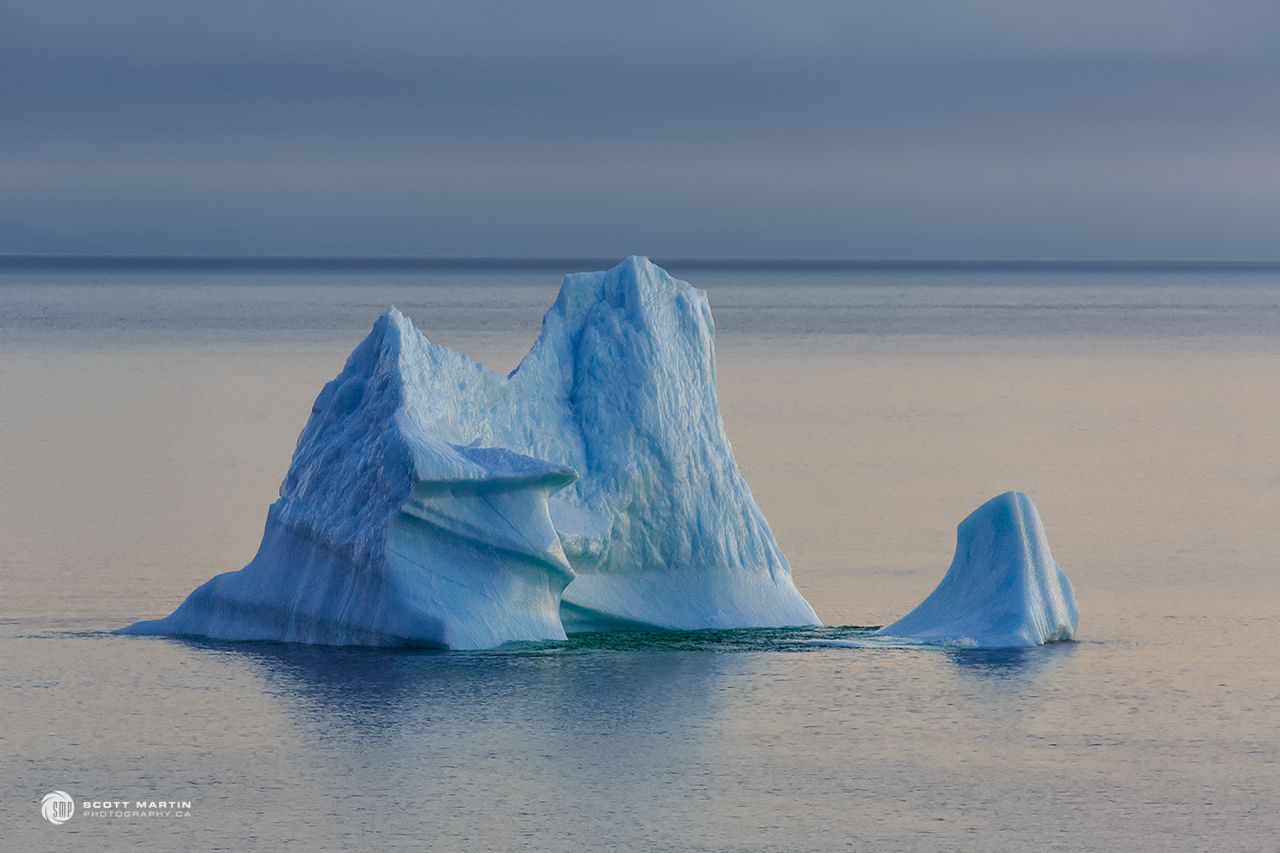
.
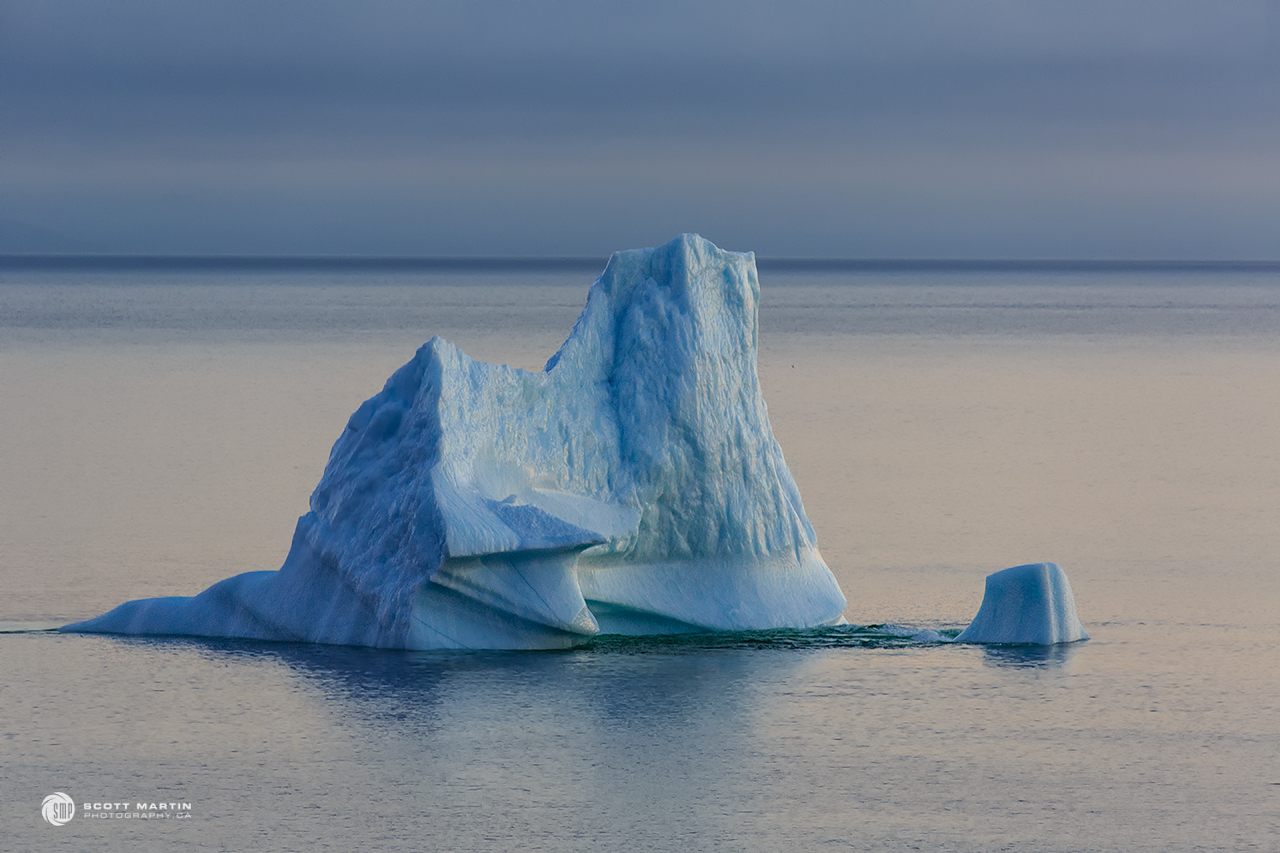
The beautiful modern art looking section of the iceberg is about to disappear forever.
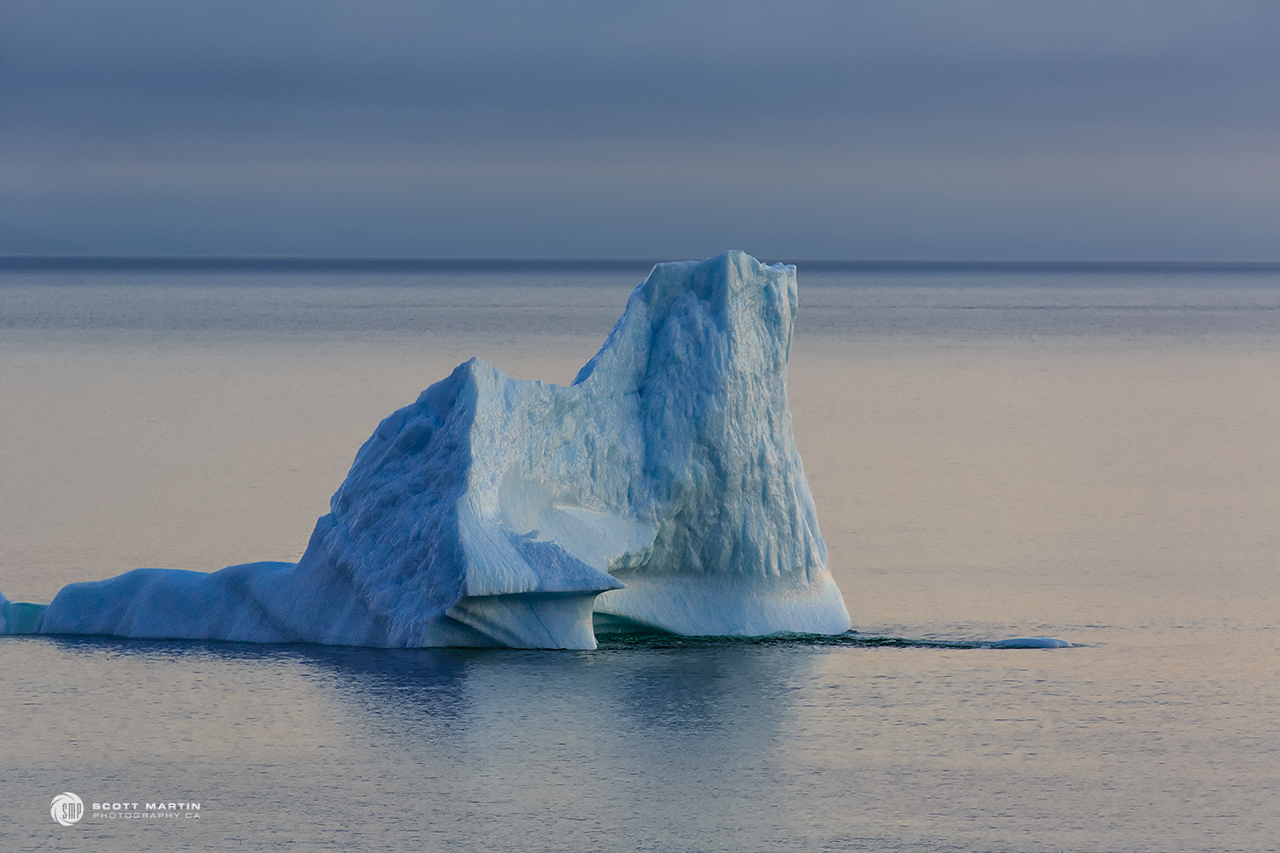
As the iceberg rotates a whole new mass of ice appears on the left side. This section was about 100′ in length.
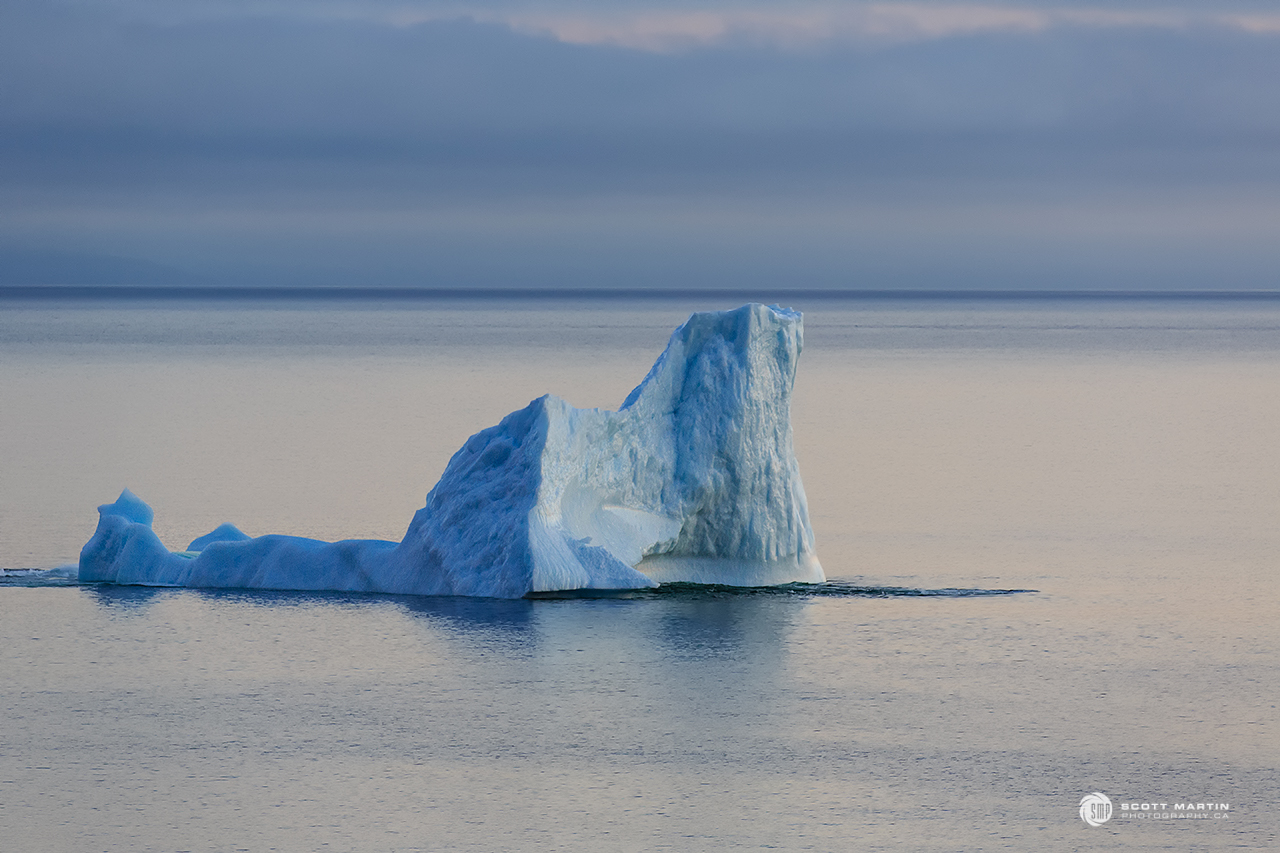
.
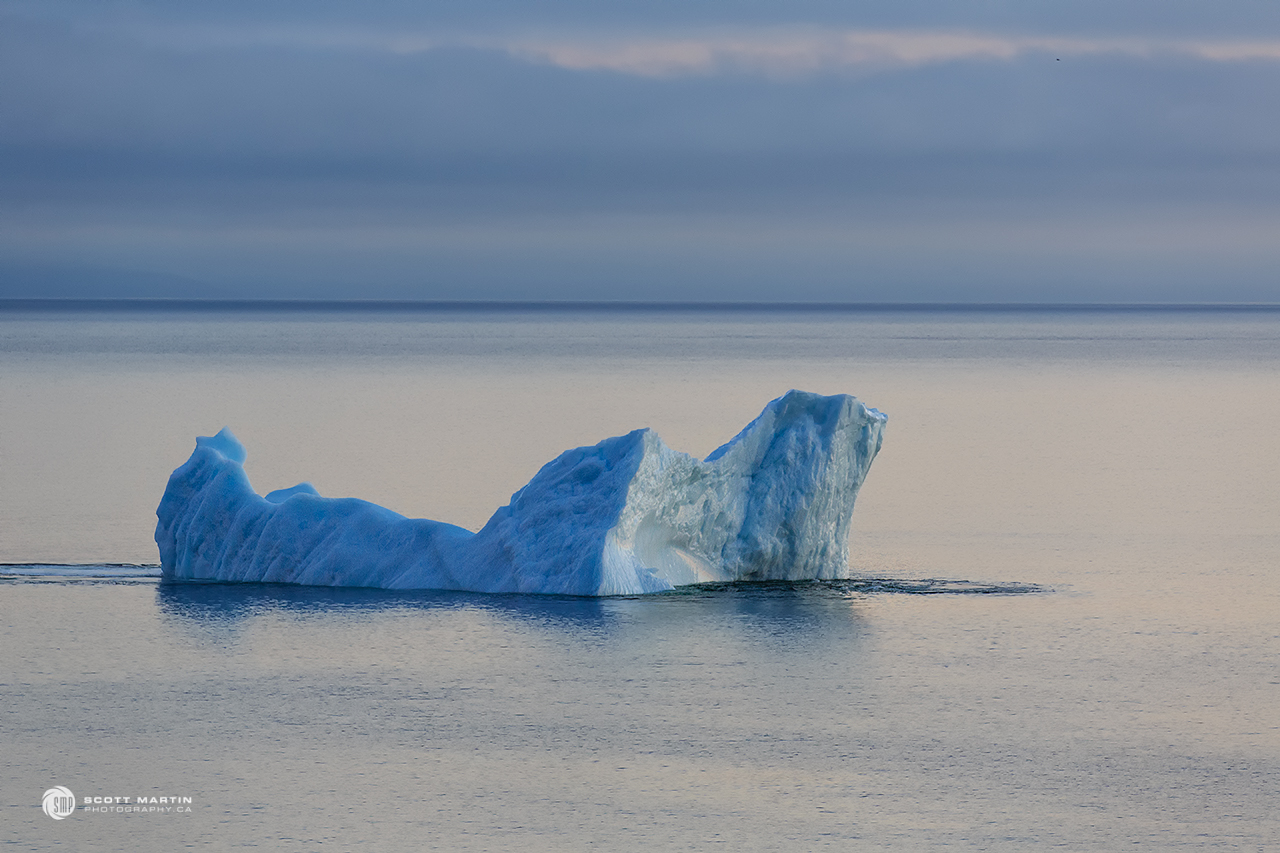
The image above shows the iceberg at its maximum rotation and now it slowly reversed its rotation and began to roll away from us. The unsettling of the iceberg caused another large pice of ice to flake off, as seen on the right side of the following image.
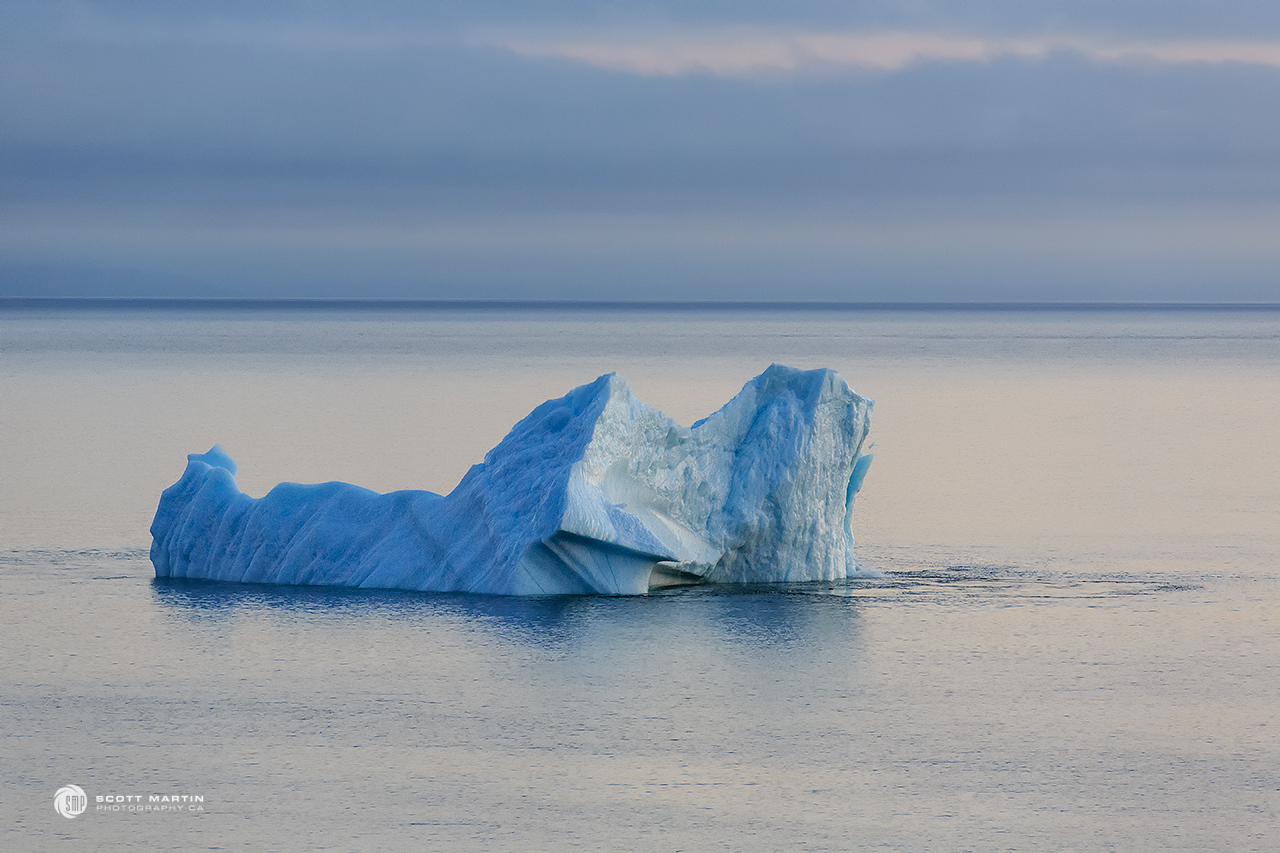
This was a huge pice of ice, at least thirty feet in height. The sound of the fragmentation and ensuing splash was a unique and unforgettable sound.
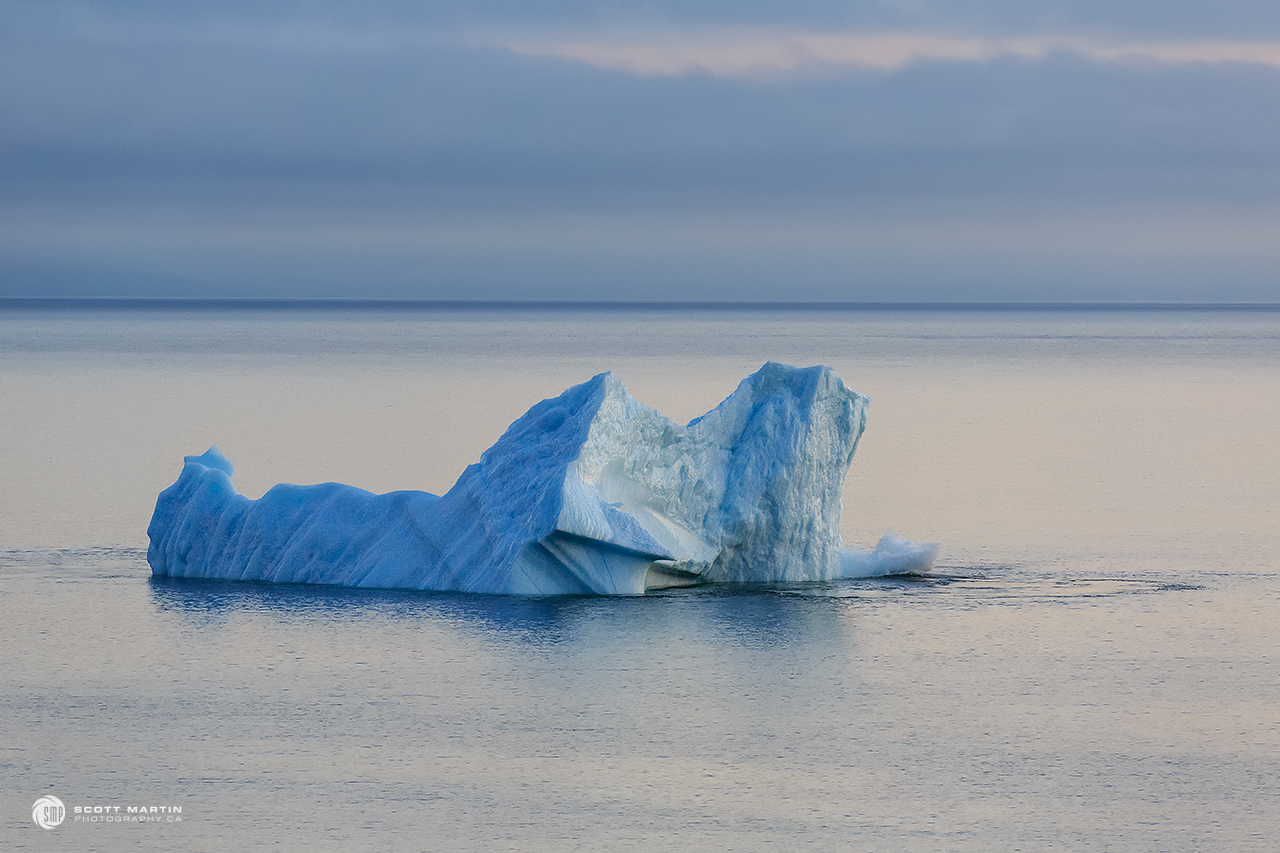
.
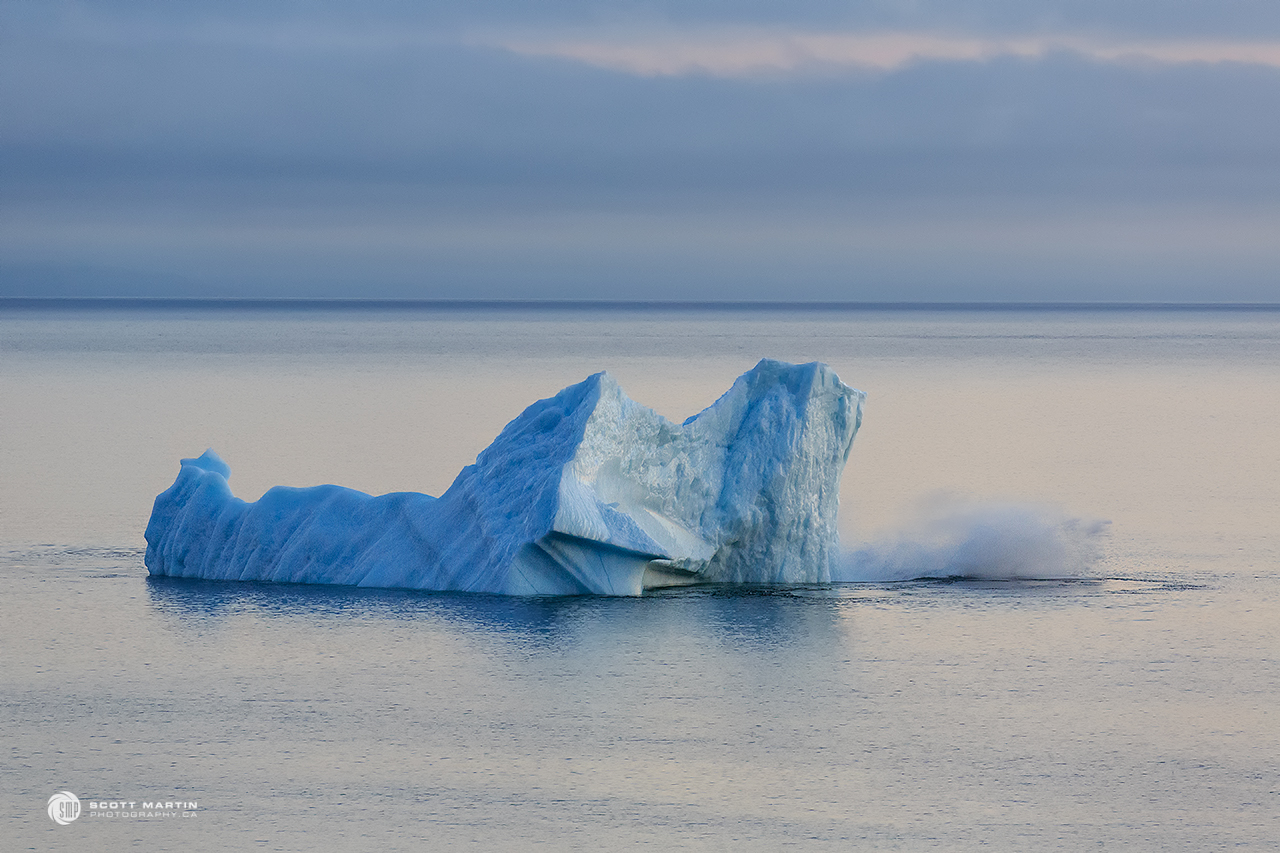
After the enormous splash, the iceberg silenced and the surrounding waters calmed.
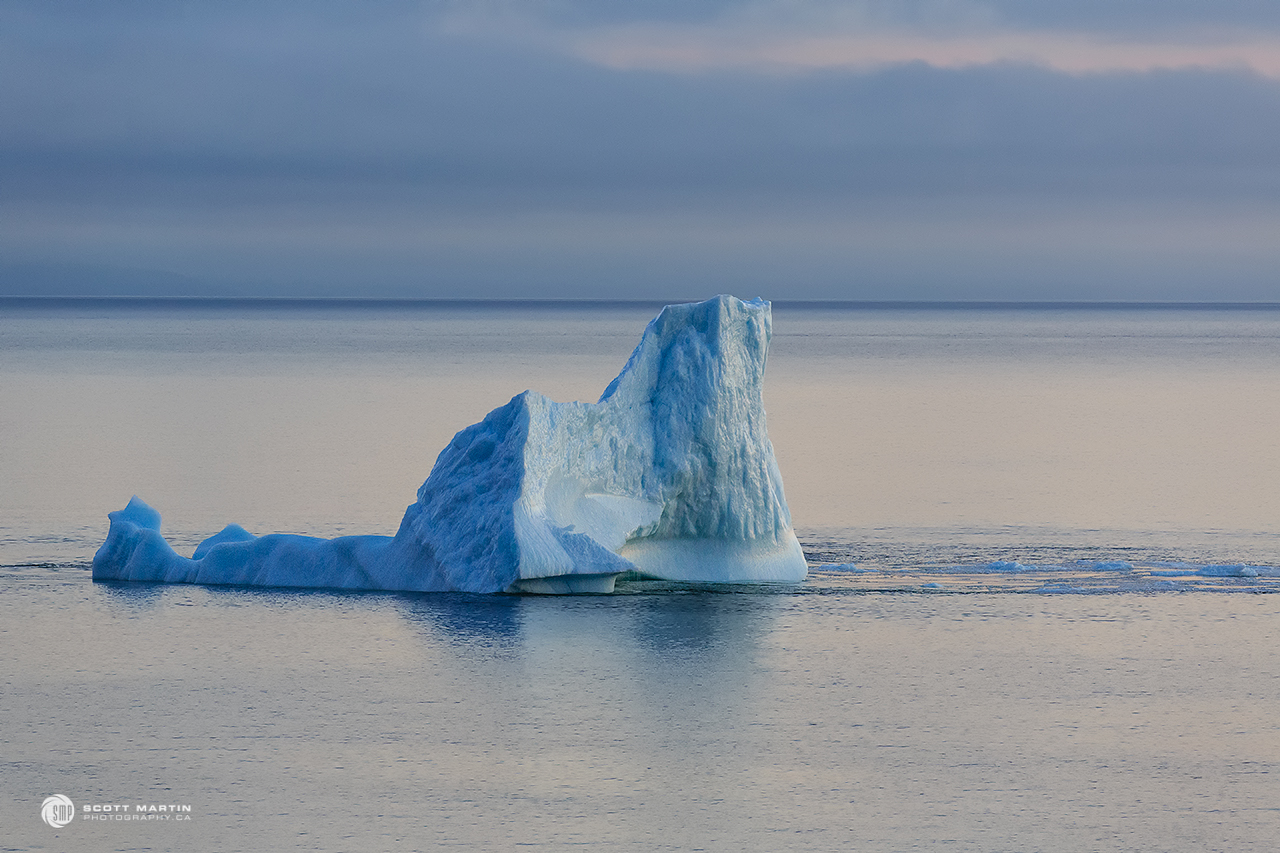
The previous images were taken over approximately ten minutes and by the end of that time the iceberg had loosed itself from the ocean floor 580′ below and slowly started drifting out into the North Atlantic. All of the images in the previous sequence were taken with the camera on a tripod so you can get a sense of how much the iceberg was moving by comparing its profile against the horizon.
When we left our hotel early in the morning, Deb & I had no idea we would be spending the entire day watching an iceberg, but what a day it was. Never having seen an iceberg before and then watching it break apart over the day and move out to sea was a highlight of the trip. We highly recommend when travelling to ‘The Rock’ that you schedule a time of the year you are likely to see some icebergs. They will never disappoint.
More images of icebergs can be found in the Iceberg Gallery while images from ‘The Rock’ can be found in the Newfoundland Gallery.
If you haven’t already done so, please subscribe to the blog and receive notification of future blog posts. The next two or three will be centred on Newfoundland; its rugged geography, old light houses, Puffins and Humpback Whales!
As we come to the end of another year, I’d like to thank all of you who have followed the blog. Your comments, support and encouragement are much appreciated. From our family to yours, a very Merry Christmas and Happy New Year.


Scott
Really enjoyed your blog post and pictures. My daughter and I were your kayak’ers! It was an amazing day and like you said, pure serendipity that we just happened upon the iceberg that day. Certainly a day and an entire trip we will never forget.
Jim, Patty & Erin Sumner
Great to hear from you Jim and yes it was a day we will not forget. It was a pleasure to meet you, Patty & Erin and watch you brave the iceberg in your kayaks!